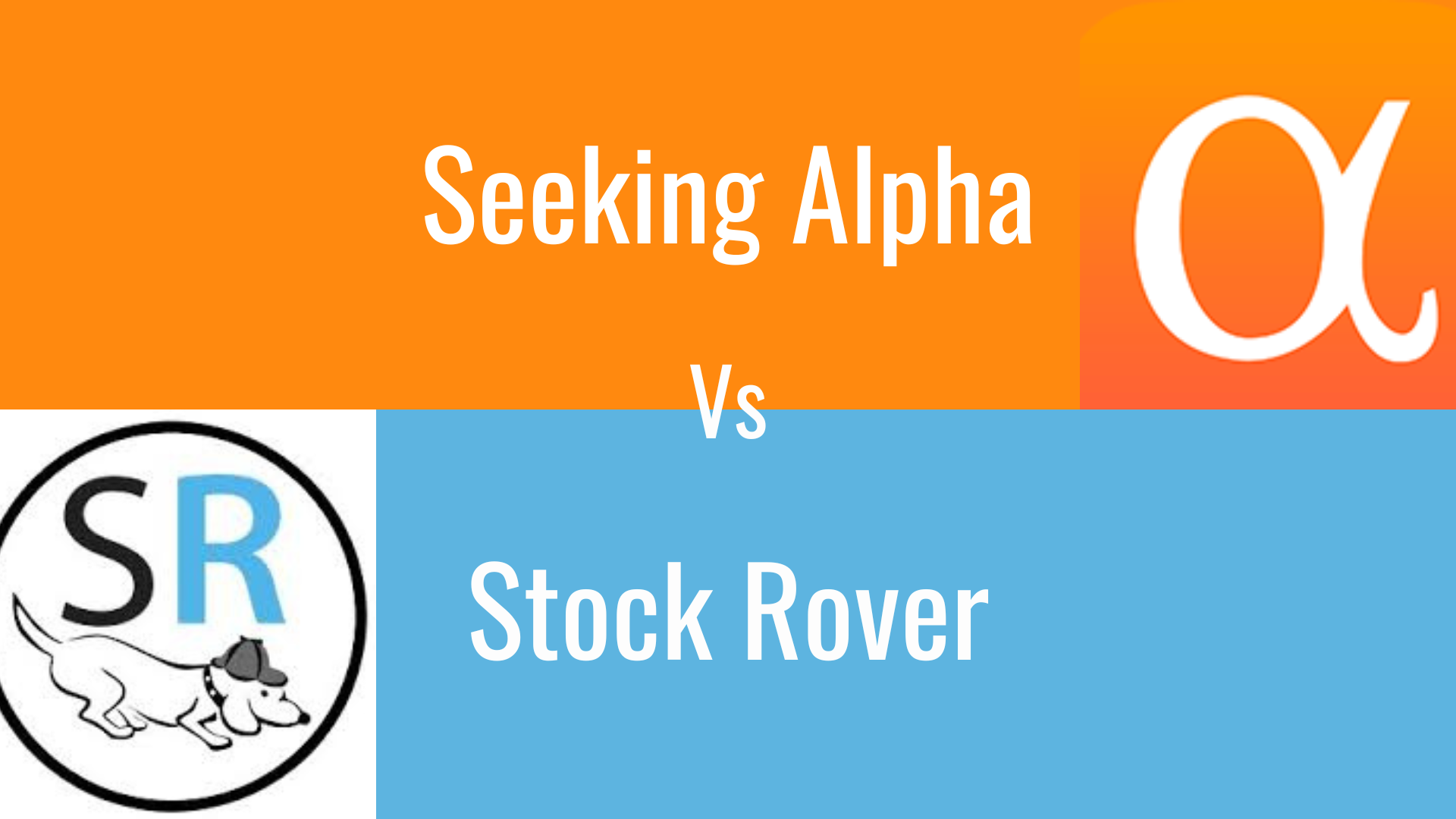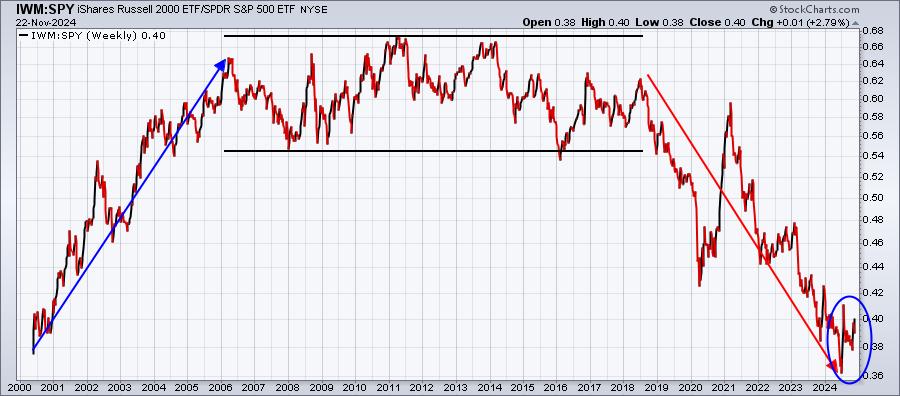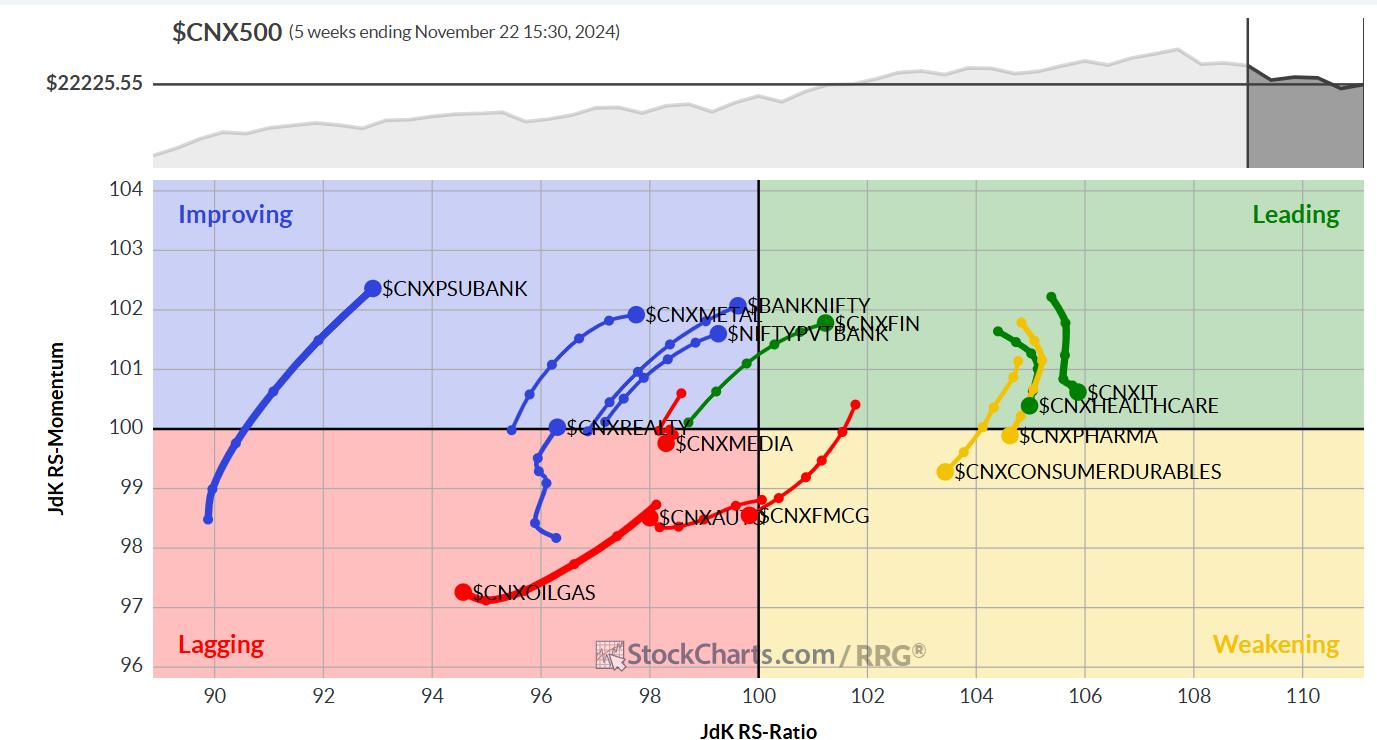Researching investments before you buy is essential. While it’s never possible to predict exactly what will happen with a stock or ETF in the future, proper research can help investors understand what they’re buying. That’s why we’re comparing Stock Rover vs Seeking Alpha in this review.
Both Seeking Alpha and Stock Rover are investment research platforms, but they cater to different types of investors. Seeking Alpha has 20 million monthly users, while Stock Rover has 170,000 subscribers as of early 2024.
We should note that these aren’t identical metrics. Monthly users figures may include casual visitors to a website who may or may not be subscribers. We can only report figures as these companies report them.
Before you commit to subscribing to one or the other, we’ll walk you through the features and functions of each, how you’ll benefit from using them, and what you can expect in terms of results.
Overview of Stock Rover and Seeking Alpha
Before we get into the details of each platform’s features and benefits, let’s start with a quick overview of each.
Stock Rover
Stock Rover is a platform that focuses on detailed portfolio analysis, preset screeners, custom screening tools, plus advanced financial metrics for data-driven investors.
The Stock Rover interface is more complex than Seeking Alpha’s. They do a great job with graphics, and their charts and other visuals are impressive. That makes Stock Rover a good choice for experienced investors.
We’ll get into more details about subscription plans and costs later, but one thing that sets Stock Rover apart from some of the other investment research options out there is their prices, which are very affordable.
Seeking Alpha
Seeking Alpha is a research platform that bills itself as the largest investment community in the world. Subscribers get access to news plus expert analysis and community-created insights.
Some of Seeking Alpha’s stand-out features include their respected Quant Ratings. Stocks and ETFs with “Strong Buy” ratings have consistently outperformed the S&P 500.
Seeking Alpha subscribers can access a huge library of research and analysis, including 10 years of financials, Earnings Call Transcripts, watchlists, and more.
Like Stock Rover, Seeking Alpha has a free plan and several subscription levels. We’ll talk about prices and features later and whether we think Seeking Alpha is worth it.
Pro Tip:
Ready to enhance your portfolio? Sign up for [Stock Rover] or [Seeking Alpha] and start making informed investment decisions today!
Key Features Comparison
Here are some of the key features by category, side by side, so you can get an idea of what to expect if you try either of these platforms.
| Feature | Stock Rover | Seeking Alpha |
| Portfolio management tools | Link to brokerage portfolio; future earnings projections and simulations; rebalancing; correlation reports; portfolio alerts | Create portfolio; custom price, rating, and news alerts; Portfolio Health Score; custom portfolio views and charting; portfolio-related news feed |
| Stock ratings | Proprietary ratings on a scale from 1-100; ratings for value, growth, quality, and investor sentiment; Piotroski F score; Altman Z-Score | Proprietary Quant Ratings from 1-5; ratings on profitability, growth, momentum, revisions, and valuation; Wall St Analyst Ratings; SA Ratings |
| Research | Up to 10 years of financials; earnings calendar and report summaries; research reports | 10 years of financials; Earnings Call Transcripts, including recordings and Q&A; access to library of stock ideas and analysis |
| Analytical tools | Watchlists; screeners; custom views and visualizations | Preset and custom watchlists; preset and custom screeners; access to expert analysis |
| Community engagement | None | Access to Seeking Alpha’s investment community and investing groups |
| User experience | Cluttered interface; side menu; slow to load; good visualizations and relatively simple navigation once you’re accustomed to it | Clean, customizable interface and dashboard; side menu; quick to load; simple navigation. |
Both Seeking Alpha and Stock Rover publish Earnings Calls after they are approved by the SEC.
Call to action (CTA) – Want to explore these features firsthand? Sign up for Stock Rover or Seeking Alpha today to start your trial!
User Interface and Experience
One of the most important elements of any investment research tool is the user experience. What is it like to use Stock Rover and Seeking Alpha?
Stock Rover
The Stock Rover dashboard may be a bit intimidating for new investors. While we appreciate the visualizations, newbies may not be able to understand what they’re looking at.
There’s no real customization possible, either, which means that after you set up your portfolio, you’ll see something very similar to the image above: a heat map of your portfolio. What you can do – and this is a nice feature – is choose a timeframe for the visualization, ranging from one day to one year.
We also like that you can click on any investment in the heat map and get a snapshot of the company’s financial status.
The menu is easy enough to navigate, and has a similar set-up to the menu for Seeking Alpha, which you’ll see below.
There are certain elements where the load time is slower than we’d like.
Seeking Alpha
The Seeking Alpha dashboard, by comparison, is clean and easy to read. You can customize your view by clicking the little pencil icon next to “Home” on the side menu.
The image here is the default image, which shows up-to-the-minute stock prices, and market news, plus trending news and analysis.
If you want a customized view, you can choose custom modules in these categories:
- My Stocks
- Dividend Investing
- Market Performance
- Top Stocks
- Latest Quant Ratings
- Latest Analyst Coverage
- Analysis
- News
- Pros
What we like about the Seeking Alpha user interface is that in addition to being fully customizable, it’s easy to understand.
We should also note that the user experience is enhanced by speedy load times and access to community features, which enable new investors to learn from those who have more experience.
Overall, we prefer Seeking Alpha for beginner investors and Stock Rover for those with more experience.
Pro Tip:
Ready to enhance your portfolio? Sign up for [Stock Rover] or [Seeking Alpha] and start making informed investment decisions today!
Pricing and Premium Features
Both Seeking Alpha and Stock Rover have multiple plan tiers. Here’s how they break down.
Stock Rover Pricing and Premium Features
Stock Rover’s free plan offers limited features and tools, including access to comprehensive information about 8,500+ US stocks, plus 4,000 ETFs and 40,000 mutual funds. You’ll also get portfolio integration, portfolio management tools, daily analyst ratings, and more.
There are three premium tiers. Here’s an overview of their features and prices.
| Essentials | Premium | Premium Plus | |
| Price | $7.99/month | $17.99/month | $27.99/month |
| Stock Exchanges | Y | Y | Y |
| ETFs/Mutual Funds | N | N | Y |
| Metrics | 275+ | 375+ | 700+ |
| Historical Data | 5 years | 10+ years | 10+ years |
| Charts | Y | Y | Y |
| Portfolio Management | Portfolio integration, portfolio management, email performance reports | All portfolio features | All portfolio features |
| Stock Ratings | N | 10/month plus Dow 30 | Unlimited |
| Alerts | Tickers | Tickers, portfolios, watchlists & indices | Tickers, portfolios, watchlists & indices |
| Stock Screening | 200+ metrics | 300+ metrics | 500+ metrics |
| Ranked Screening | N | Y | Y |
For all plans, you can knock about 2 months off your total cost by paying annually in advance, and about 4 months if you pay for 2 years in advance.
Seeking Alpha Pricing and Premium Features
Seeking Alpha has a free plan with limited features, including creating a portfolio, setting up price alerts, and reading one free Premium article per month. There are two premium plans, as follows.
| Feature | Seeking Alpha Premium | Seeking Alpha Pro |
| Cost | $299/year for first year; $499/year on renewal; get a 30-day trial for $4.95 | $2,400 per year; get a 30-day trial for $99 |
| Portfolio Management | Y | Y |
| Quant Ratings | Y | Y |
| Portfolio Health Score | Y | Y |
| Comparisons | Up to 20 investments | Unlimited investments |
| Watchlists | Y | Y |
| Screeners | Y | Y |
| Short Ideas | N | Y |
| Upgrade and downgrade alerts | N | Y |
| VIP customer service | N | Y |
The low-cost premium trials are excellent for people who want a full exploration of Seeking Alpha’s features before committing to an annual subscription.
Which Platform is Best for You?
When comparing Stock Rover vs Seeking Alpha, how do you decide which platform is best for you? Here’s our take.
Best for Beginners
One of the hardest things for beginners is the loneliness of preparing to make that first investment, particularly if you’re not working with a broker or financial professional.
We think Seeking Alpha’s community options make it an excellent choice for beginners. While there’s a lot of information, you can get help from community members or even join an investment group to get pointers.
The amount of information available may feel overwhelming at first, but there’s also a ton of educational material to help you learn how to read financials and earnings call reports, and how to make sense of Quant Ratings and what they mean.
Best for Advanced Investors
Stock Rover has a data-driven approach with advanced customization and visualization options that make it ideal for experienced investors who already understand metrics and want the option to look at investments from multiple angles before deciding what to buy.
We do like some things about Stock Rover’s interface and some of its visualizations would be easy to understand even for beginner investors.
We’d be remiss if we didn’t mention that Stock Rover’s lower price point may make it preferable for some beginners, at least those who are willing to undertake a significant learning curve to make full use of Stock Rover’s features.
Pro Tip:
Ready to enhance your portfolio? Sign up for [Stock Rover] or [Seeking Alpha] and start making informed investment decisions today!
Conclusion
Here are our key takeaways from this Stock Rover vs Seeking Alpha comparison.
Both platforms offer an impressive amount of stock research and analysis. They also offer nice visualizations to help you understand the performance of investments in your portfolio, and some customization options.
For beginner investors, we think Seeking Alpha has the edge because of its user-friendly interface and community features. Those who are just starting their investment journey can learn quickly from community content and expert analysis.
More advanced investors may prefer the extensive metrics and more in-depth screening options from Stock Rover and they’re less likely to be overwhelmed by the interface.
Whatever level of experience and comfort you have, we encourage you to choose the platform that best aligns with your investment strategy and comfort level.
FAQ
Yes. Both services have free plans. You can get a free 14-day trial of Stock Rover’s premium features. Seeking Alpha doesn’t have a free trial, but they do offer a 30-day premium trial for just $4.95.
Stock Rover has three premium tiers that range in cost from $7.99 per month to $27.99 per month. Seeking Alpha Premium costs $299 for the first year (that’s $24.92 per month) and Seeking Alpha Pro is $2,400 per year.
Yes. When you log on, you’ll see real-time market data on your dashboard. In addition to seeing real-time prices for items in your portfolio, you’ll also get market summaries for the DJIA, S&P 500, and Nasdaq.
Stock Rover is ideal for experienced investors who are already comfortable with market analytics and want to be able to customize reports to do a deep dive on their investments. It’s also a better choice for people who want to invest in mutual funds.
Seeking Alpha is best suited for beginner and intermediate investors who may need a hand understanding market metrics and investment basics. The community aspect of Seeking Alpha sets it apart, and its customizable interface and easy-to-read charts can help beginners.
Yes. You can click on any stock in your portfolio or look up a stock or ETF and get a real-time price and a feed showing news related to the stock. After-market quotes may be delayed by up to 15 minutes.





